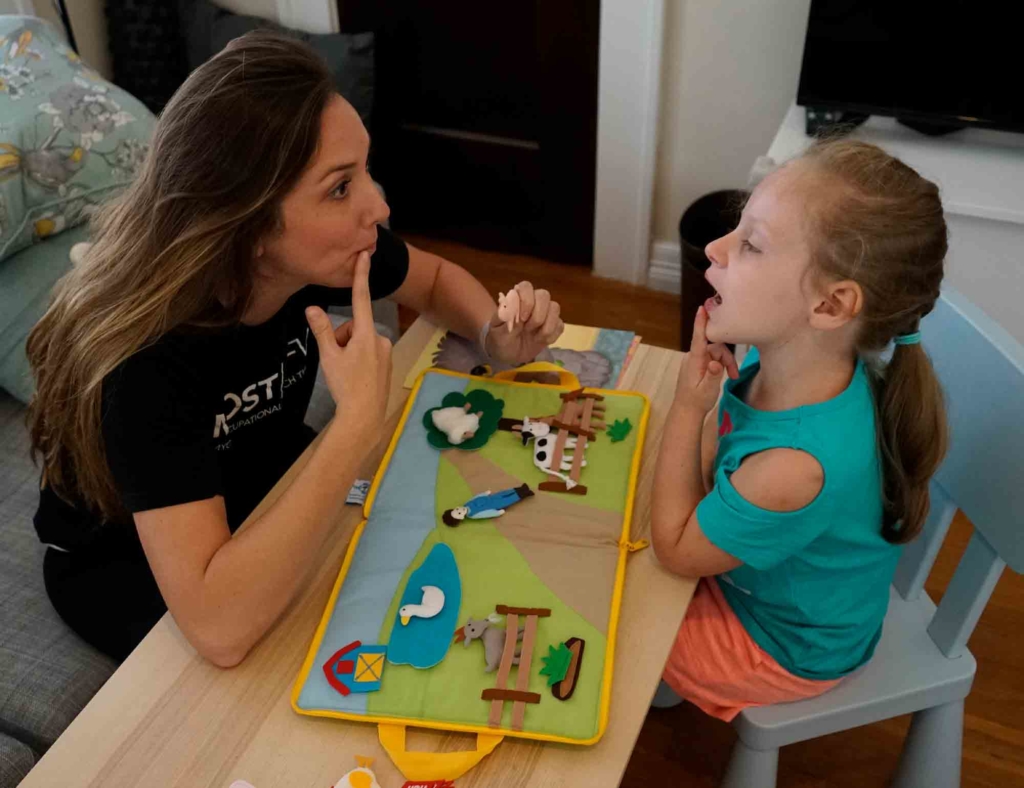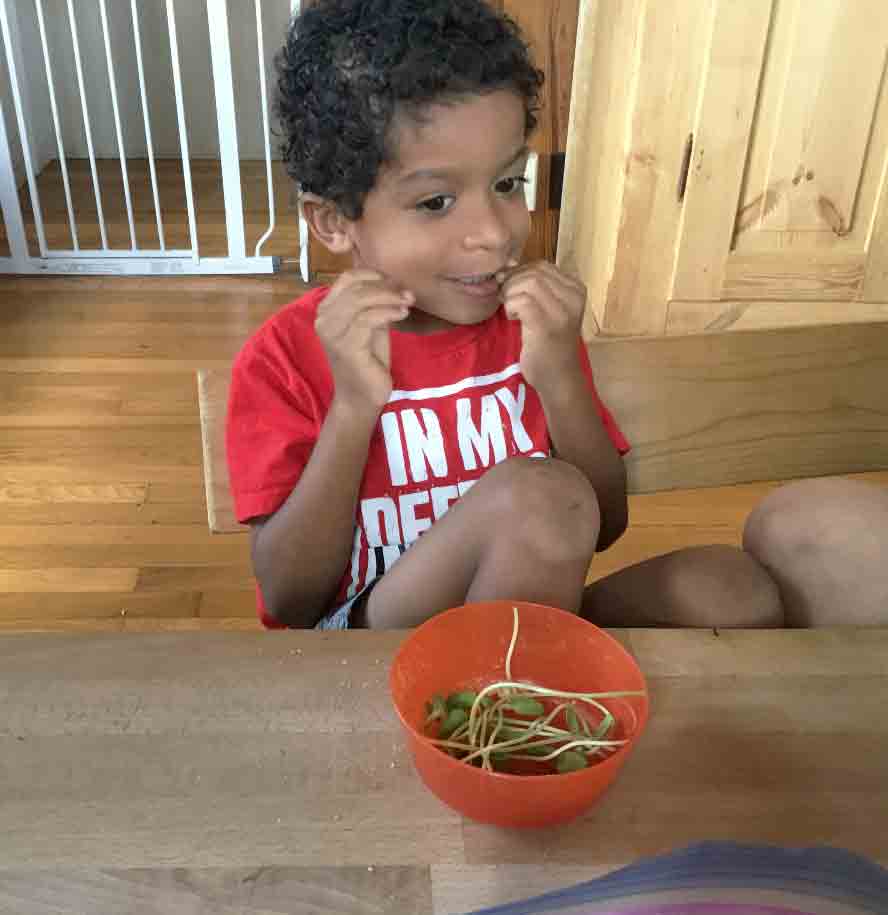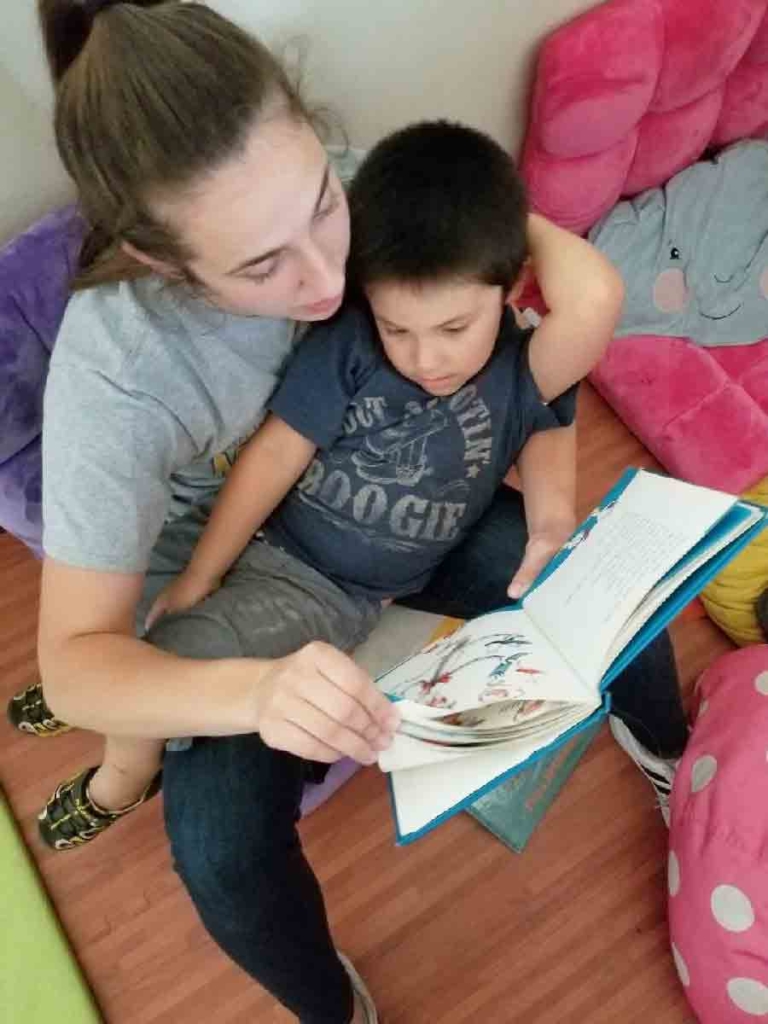Bright Mosaic has provides occupational and speech-language therapies in our clinics. So, parents, say goodbye to driving to separate locations for the therapies your child may need!
Notice: Speech Therapy Requirements
In order to qualify for Speech Therapy services, a client must also be enrolled in Bright Mosaic’s ABA Program.

Why would my child with autism need speech therapy?
Verbal and Non-verbal Communication issues
First, all children have an innate desire to communicate and learn. One of the greatest joys of parenthood is watching children discover the world around them through the acquisition of speech and language.
Because autism is a developmental disorder that affects neurological function, it usually involves some level of communication delay or impairment. People with autism may struggle with both verbal and nonverbal communication, finding it difficult to interact socially and cognitively. Just think, the smallest difference in someone’s facial muscles or body positioning could be the between concentration or anger.

Trouble with Feeding and Swallowing
More surprisingly, Speech Therapy is an effective tool for teaching feeding and swallowing.
It’s easy to take for granted that eating is an acquired skill. Closing lips to drink from a cup without spilling, chewing and moving food around in the mouth without biting the tongue or cheeks, and properly breathing while doing so.
Swallowing is the next part of the equation, and a difficult one at that. All the muscles involved in swallowing are hard to describe, and one wrong move could lead to choking. As if that’s not difficult enough, then there’s the issue of pills. They usually taste bad, feel unnatural to swallow something whole, and they stick to the throat on the way down. But when a child is sick, medication isn’t up for debate.
Whereas most children gradually get better at eating and swallowing, children on the spectrum often stagnate and even develop aversions to eating many foods and taking medications.
Developmental Milestone delays
Developmental milestones are behaviors at every age that, if present or not, can help determine if your child is developing typically. But know there’s some wiggle room! Speech therapy milestones vary with each child, so don’t feel discouraged if your child doesn’t reach milestones right “on time.”
A child with autism may:
- Be completely nonverbal
- Make grunting sounds, shriek, or other forms of atypical sounds
- Hum or speak in a musical cadence, or use robotic-like speech
- Babble (with no distinguishable words), or speak in a garbled manner making parts of sentences unrecognizable
- “Parrot” or mimic what someone else says (called echolalia)
- Speak in monotone, using an inexpressive tone of voice
- Lack eye contact and hand gestures
- Have trouble understanding the context or meaning of words or symbols

One of the trickier signs to detect is when a child is memorizing words (i.e. books) without comprehending their meaning.
Some parents are mislead by the excitement that their child knows how to read their favorite books, when really, they’re only hearing memorization. To test this, try reading a new book and choosing easy words to see if the child can recognize and communicate it without prompting.
How does speech therapy work?
According to Autism Speaks,
“Speech therapy is designed to coordinate the physical mechanics of speech with the meaning and social use of language.”
autism speaks
Such a program begins with an individual evaluation by a speech-language pathologist to assess an individual’s verbal aptitudes and challenges.
The Initial Evaluation
First, a Speech-language pathologist’s should make you and your child feel comfortable by developing a trusting and positive relationship.
Then, using various objective tests, games and observational techniques, he or she will assess several components that go into your child’s speech and language, including:
- Articulation
- Phonetics
- Speech
- Fluency
- Cognition
- Memory
- Hearing
- Oral motor function
- Feeding and swallowing
Ongoing Speech Therapy Services
Next, the SLP analyzes the results of the initial evaluation and creates an individualized treatment plan. This detailed plan lays out the strategies that will be used to improve speech and language skills. Progress is measured daily, and goals are updated according to the ‘mastery criteria’ described in the treatment plan.
Caregiver Training & Professional Collaboration
While the most intensive speech therapy is conducted inside the classroom, it begs to be said that the bulk of the work happens at home. It is imperative to the child’s treatment plan to have consistency across all settings, which is why effective speech therapists train the family and other caregivers on the same methods of instruction, prompting, and modeling that occurs during therapy sessions.
When this kind of instructional consistency occurs in all settings, the child is likely to make more rapid and lasting progress.
